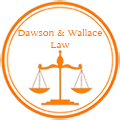The best protection that you can give yourself and your family in the event of personal injury suffered in a automobile or motorcycle accident is to insure that you have adequate insurance coverage before the accident ever happens. The Insurance Research Council estimated that in 2009, 24 per cent of all drivers on the road in Tennessee had NO LIABILITY INSURANCE COVERAGE (www.insurance-research.org).
Many other Tennessee drivers have only the statutory mandated $25,000 minimum liability coverage. Uninsured/Underinsured coverage (UM) is generally inexpensive compared to collision coverage on auto policies and can very quickly become the most important portion of your policy if you are injured. The vast majority of motor vehicle accident judgements are fully dischargeable in bankruptcy. Too often, the only resource available to the injured party is insurance limits. Parties with substantial assets have substantial coverage as a rule. Those individuals with no assets have nothing to lose to begin with and are not as motivated to seek high liability coverage.
Insurance companies must offer its policy holder an equal amount of UM to that issued for the insured’s liability coverage at the time the policy is placed into effect. In fact, Um coverage must be declined in writing by the policyholder when the policy is issued for the insurance company to avoid exposure for UM bodily injury claims.
Unfortunately, a significant number of policy applicants decline UM coverage for a very simple reason: it lowers the premium. Just as an initial policyholder may decide not to have UM coverage to save money, other drivers are going a step further by declining to be insured at all. This is known as “going bare”, and if you’re on the wrong side of this equation, you can end up with the bare fact that you have no coverage to compensate you for your injuries.
Some years ago, Tennessee passed a law required proof of insurance before a newly purchased automobile could be driven off the lot. Sound good?
The problem is that for as little as fifty dollars, an individual may obtain a policy binder “proof of insurance” on a payment plan to satisfy the requirement. The person then simply doesn’t make any more payments on the plan. The insurance policy is cancelled, but the auto buyer is on the road running bare.
Keep your limits up. It can cost a very modest amount monthly to increase your liability/UM coverage from $25,000 to $100,000. It’s an investment worth making.

LEAVE A REPLY